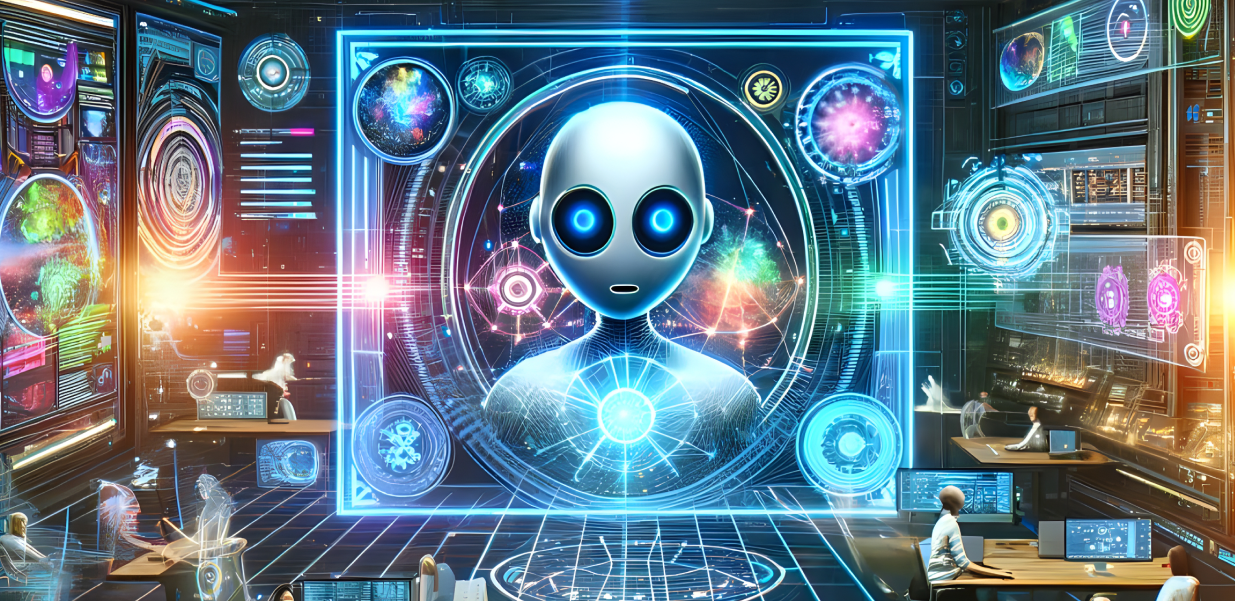Disclaimer: Due to time constraints, this course primarily focuses on lectures with limited hands-on practice opportunities. The full scope of the stated course content may not be delivered in its entirety. Additionally, the tutor and course content are subject to change without prior notice. We appreciate your understanding and flexibility.
#4
The Future of Animation: AI Tools and Open-Source Software

Course Objectives
To introduce participants to key AI applications in the animation pipeline, focusing on concept development, 3D modeling, and visual effects.
Course Contents
- Introduction to AI in Animation (15 mins)
- Overview of AI applications in animation
- Current trends and future prospects
- AI-Assisted Concept Development (20 mins)
- AI for idea generation and visual brainstorming
- Text-to-image AI tools for rapid prototyping
- 3D Modeling and Texturing with AI (25 mins)
- AI-driven topology optimization in Blender
- AI-powered texture generation in Krita
- AI in Animation and Visual Effects (20 mins)
- Machine learning for character movement
- AI in particle systems and fluid simulations
- Integrating AI into Animation Workflows (10 mins)
- Balancing AI assistance with artistic vision
- Best practices for AI-human collaboration
Course Highlights
- Overview of AI's role in revolutionizing animation processes
- Hands-on demonstrations with open-source software
- Discussion on the future of AI in animation
Blender is a powerful, open-source 3D creation suite available for Windows, macOS, and Linux. This guide provides step-by-step instructions for downloading and installing the latest version of Blender on each operating system, along with basic equipment requirements.
Basic Equipment Requirements
Before installing Blender, ensure your system meets the following minimum requirements:
- Operating System:
- Windows 8.1 or later
- macOS 10.13 or later
- Linux: Any recent distribution with support for OpenGL 3.3
- Processor: 64-bit dual-core CPU
- Memory:
- Windows: 4 GB RAM
- macOS: 8 GB RAM recommended
- Linux: 4 GB RAM
- Graphics: OpenGL compatible graphics card with at least 1 GB RAM
- Storage: At least 500 MB of free disk space
Downloading Blender
- Visit the Official Website:
- Choose Your Operating System:
- The website will automatically detect your OS and suggest the appropriate version.
- Download the Latest Version:
- Click on the download button for the latest stable release.
Installing Blender on Windows
- Run the Installer:
- Locate the downloaded
.exefile in your Downloads folder and double-click it.
- Locate the downloaded
- Follow Installation Prompts:
- Click "Next" on the setup screen.
- Accept the License Agreement and click "Next".
- Choose the installation location (or leave it as default) and click "Next".
- Click "Install" to begin the installation process.
- Complete Installation:
- Once installation is complete, click "Finish". Blender will now be available in your Start menu.
Installing Blender on macOS
- Open the Downloaded File:
- Locate the downloaded
.dmgfile in your Downloads folder and double-click it.
- Locate the downloaded
- Drag and Drop:
- In the window that opens, drag the Blender icon into your Applications folder.
- Launch Blender:
- Open your Applications folder, find Blender, and double-click to launch it. You may need to right-click and select "Open" if prompted about security settings.
Installing Blender on Linux
- Using Terminal (for Ubuntu-based distributions):
- Open a terminal window (Ctrl + Alt + T).
- Install via APT:
sudo apt update sudo apt install blender - Or Download from Official Site:
- Download the
.tar.bz2file from Blender's download page. - Extract it using:
tar -xjf blender-*.tar.bz2 - Navigate to the extracted folder and run Blender with:
cd blender-* ./blender
- Download the
Final Notes
- After installation, you can check for updates periodically by visiting the official website.
- For additional support or advanced installation options, refer to the Blender Manual.
Installation Guide for Krita
This guide provides clear and concise steps to download and install the latest version of Krita on Windows, macOS, and Linux. Additionally, basic equipment requirements are included.
Basic Equipment Requirements
- Operating System:
- Windows: Windows 8.1 or higher
- macOS: macOS 10.12 or higher
- Linux: Most modern distributions
- RAM: Minimum 4 GB (16 GB recommended)
- Graphics: OpenGL 3.0 or higher / Direct3D 11
- Graphics Tablet: Any tablet compatible with your operating system
Downloading Krita
- Visit the Official Website: Go to Krita's official download page to access the latest version.
Installing Krita on Windows
- Download the Installer:
- Click on Get Krita Now.
- Select the Windows Installer (64-bit) option.
- Run the Installer:
- Locate the downloaded
.exefile in your Downloads folder and double-click it.
- Locate the downloaded
- Follow Installation Steps:
- Confirm any prompts to allow changes to your system.
- Choose your preferred language and click OK.
- Click Next to proceed through the installation steps.
- Accept the License Agreement and click Next.
- Choose the installation location (default is usually fine) and click Next.
- Select components (leave defaults checked) and click Next.
- Choose a Start Menu folder name or leave it as default, then click Next.
- Decide whether to create a desktop icon, then click Install.
- Complete Installation:
- Wait for the installation to finish and click Finish when prompted.
Installing Krita on macOS
- Download the Installer:
- Go to Krita's official download page and select the macOS Installer.
- Install Krita:
- Open the downloaded
.dmgfile. - Drag the Krita icon into your Applications folder.
- Open the downloaded
- Launch Krita:
- Open your Applications folder and double-click on Krita to launch it.
Installing Krita on Linux
- Use Flatpak (Recommended):
- First, ensure Flatpak is installed on your system.
- Open a terminal and run:
flatpak install flathub org.kde.krita
- Using Package Manager (For Ubuntu/Debian):
- Open a terminal and run:
sudo apt install krita
- Open a terminal and run:
- Using AppImage (Portable Version):
- Download the AppImage from Krita's download page.
- Make it executable with:
chmod +x krita-x86_64.appimage - Run it with:
./krita-x86_64.appimage
Conclusion
For more detailed tutorials and resources, visit Krita's documentation.
Speaker Introduction

Stanley Yuen
Senior post-producer in the Hong Kong film industry
Stanley Yuen is a veteran production artist and instructor and has more than 24 years of experience in the Hong Kong film production industry. Mr. Yuen commands deep knowledge in animation, CG production, and film post-production, and is proficient in professional software such as Maya, Softimage, Alias, and Wavefront Explore.
Mr. Yuen has participated in the production of many international movies and TV series, including China's first CG movie "Thru the Moebius Strip", "Dearest Anima", "Return of the Cuckoo", "Heaven in the Dark", "The Menu", "A Simple Life", "Conspirators", "Curse of the Golden Flower"…





